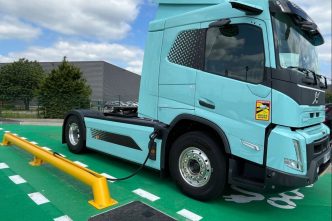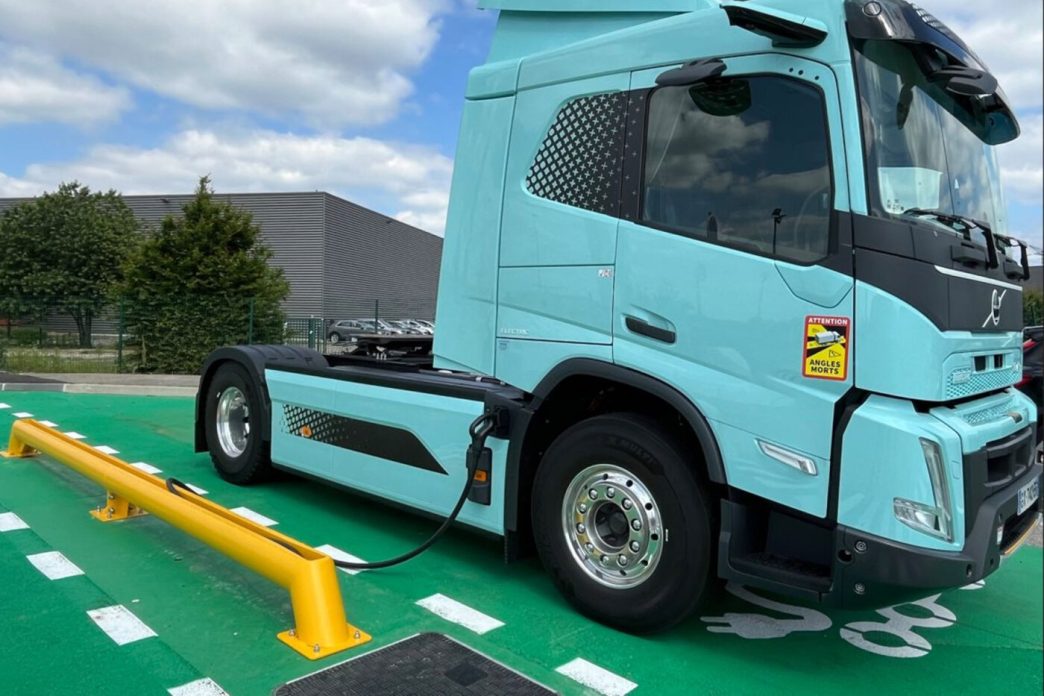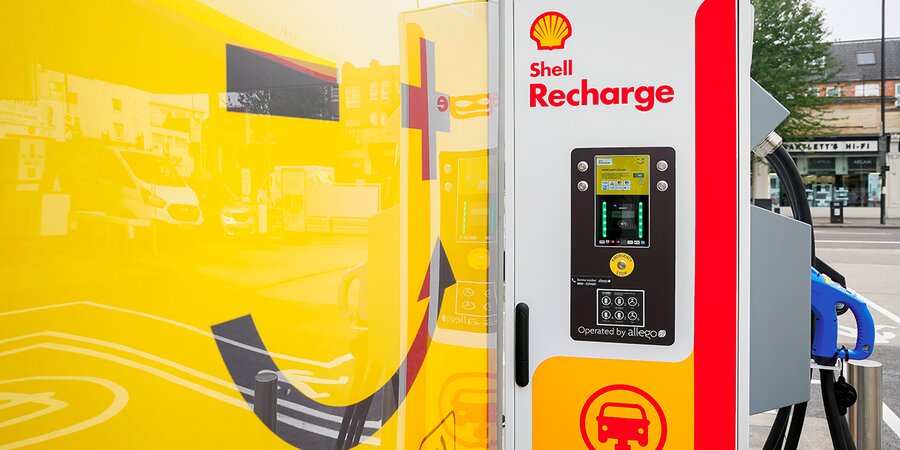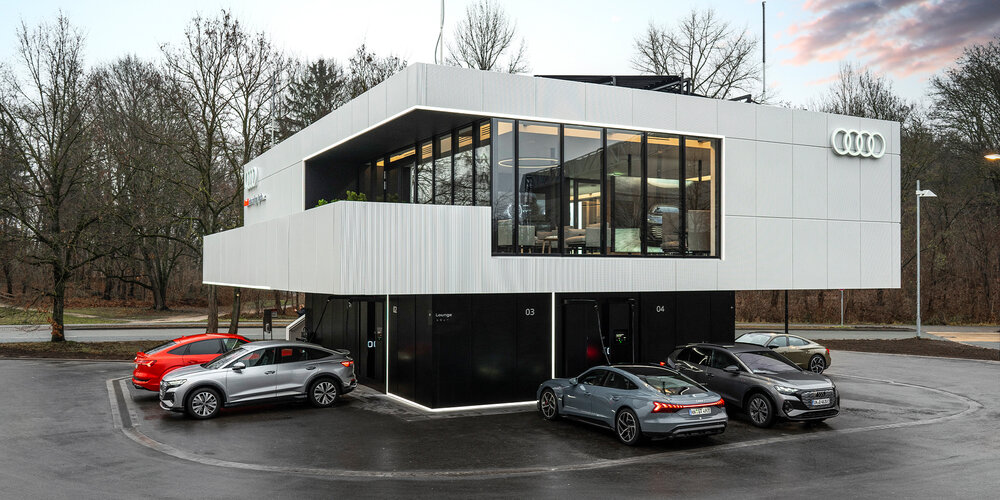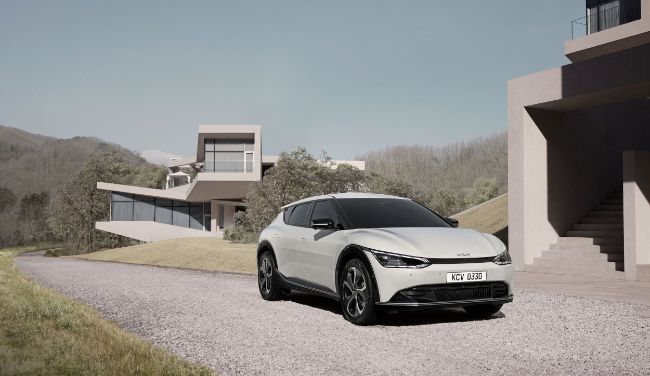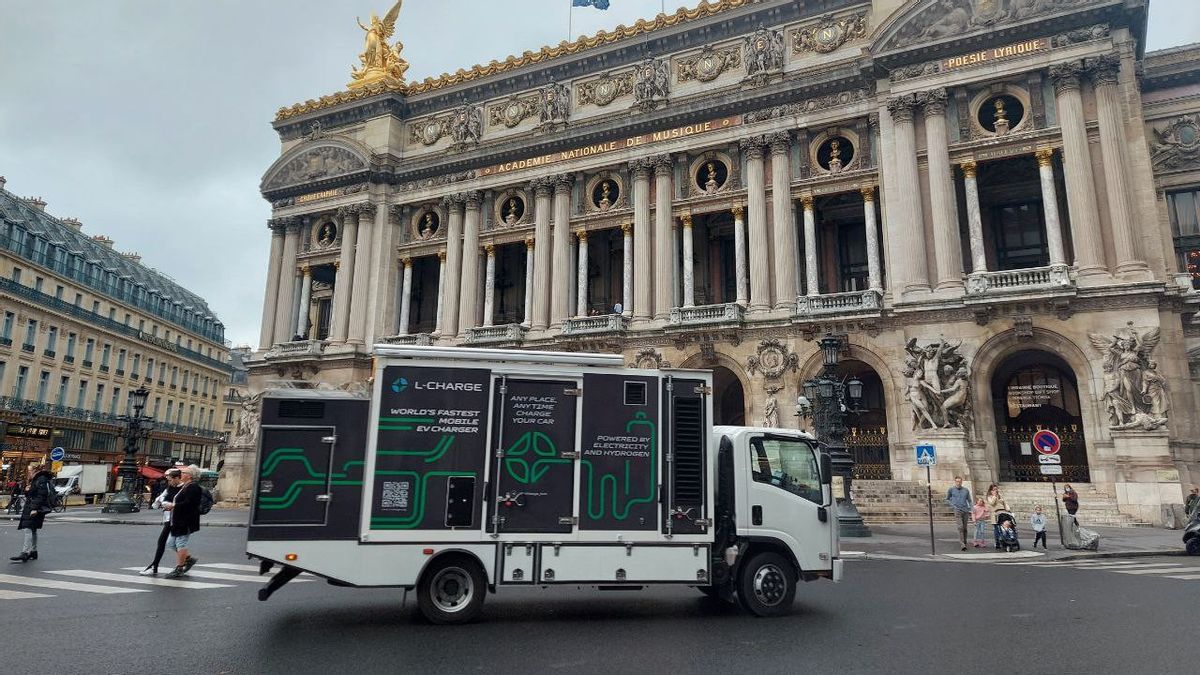Proviridis, a French energy infrastructure specialist, has introduced a new charging solution for trucks that integrates most of its components underground, addressing spatial constraints in depots. Developed in partnership with Finnish charging technology company Kempower, the system is tailored for logistics environments where space efficiency is critical.
At its Saint Quentin Fallavier site, Proviridis faced the challenge of installing charging points within limited space, accommodating both diesel and electric trucks in a shared parking area. The solution places Kempower’s control units in underground shafts between parking spaces, with charging cables stored in durable metal pipes. These pipes, painted yellow for visibility, connect to a 600 kW power unit installed nearby, capable of supplying up to eight chargers.
This underground configuration offers a cost-effective and space-efficient alternative to overhead gantry systems often used at depots. By situating the control units below ground, the setup minimizes the risk of physical damage and maintains the functionality of existing parking spaces. Additionally, the modular design supports a mix of underground units and standard charging satellites, adaptable to different depot layouts.
Kempower described the installation as a milestone, stating, “This is the first underground solution to address space limitations at truck charging sites, providing a viable alternative to overhead systems.” While costs may vary depending on site-specific conditions, the approach offers flexibility for both truck and bus depots.
Cédric Moret, Kempower’s Head of Sales in France, highlighted the benefits of the design for fleet operators. “Many fleet operators aim for sustainability but need solutions that preserve the capacity and functionality of their locations. This underground solution minimizes parking space loss, meeting an important market need,” he said.
Olivier Verdu, Technical Director at Proviridis, emphasized the system’s durability and adaptability. “The product performs well across diverse temperatures and conditions, requires minimal ventilation, and addresses a broad range of customer requirements,” Verdu noted, positioning the system as ideal for logistics operations.

